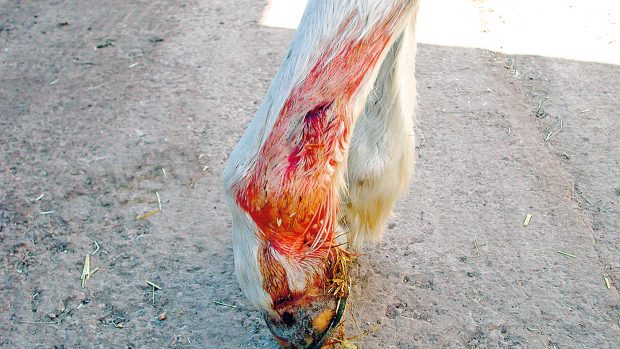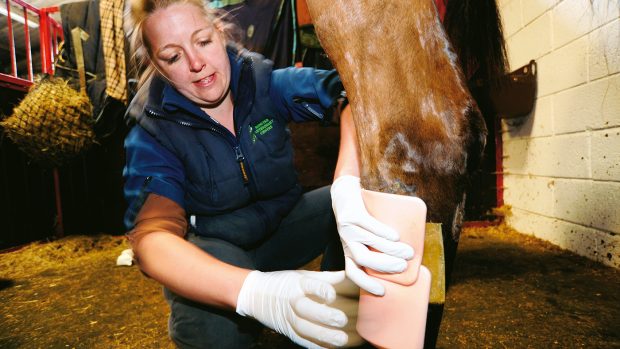An adequately trained individual and a well-stocked first aid kit could be the difference between life and death when an animal or person is badly injured. Happily, in most instances first aid means simply being able, and prepared, to cope with a fall or injury while expert help is summoned.
Anyone who travels or competes frequently will need first aid kits on the lorry for humans and animals, as well as boxes for both at home. Useful contact telephone numbers, such as vet, farrier, doctor and insurers, should be readily accessible, together with a pen and paper, a well-charged mobile phone and a torch.
Veterinary surgeon Mike Barrott of the Cinder Hill Equine Veterinary Clinic, says: “Most minor wounds are easily treated at home, but more serious injuries or those close to joints or tendons are likely to requireveterinary assistance.”
Strictly speaking, all stable yards should have a designated first aider, who has had some training.
St John Ambulance training officer Clive James says: “Falls from horses can result in extensive injuries and it’s vital that those on the scene have at least some basic training.”
There are many courses available in basic first aid. Details are available on the St John Ambulance website www.sja.org.uk or in your local telephone directory.
The equine first aid box
- Gamgee
- Cotton wool
- Melonin or similar dressings
- Antiseptic wound cleaner
- Antiseptic creams and soluble, clear wound gels
- Vetwrap or similar adhesive bandages
- Stretch, exercise and stable bandages
- Clean container for water
- Animalintex or similar poultice
- Duct tape
- Hoof pick and a pair of pliers
- Bute – check with your vet first before administering
- Golden eye ointment
- Thermometer
- Round-ended scissors
The human first aid kit
- Booklet on basic first aid procedures
- Round-ended scissors
- Thermometer
- Eye pads
- Eyewash and eye bath
- Triangular bandage and safety pins
- Melonin dressings or similar
- Antiseptic wipes
- Antiseptic wound washes
- Disposable gloves
- Resuscitators (face shields for hygienic resuscitation)
|
Look out for Horse & Hound’s new Accident and Emergency series, which starts in this Thursday’s issue (24 April), or click here to subscribe and enjoy Horse & Hound delivered to your door every week. |




